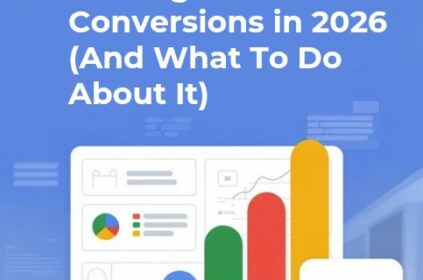In the quickly developing computerized scene with recent memory, web based publicizing usually called online advertising plays a central role in the field of marketing strategy. With the dramatic development of social media and the steadily growing worldwide local area of web clients, organizations end up in an extraordinary situation to draw in their ideal crowd.
The digital age has ushered in a transformative era where online advertising has shifted from a choice to a necessity, given the profound changes in consumer behavior and interaction with technology.
This change in perspective presents an exceptional and unfamiliar road for organizations to produce further associations with their objective segment, reforming the manner in which brands convey and reverberate with their clients.
One of the most effective ways to advertise online is through online advertising platforms. These platforms provide businesses with the tools and resources they need to create and manage their online advertising campaigns.
What are Online Advertising Platforms?
Online advertising platforms, in the present technology driven world, serve as invaluable tools for businesses aiming to effectively promote their products and services.
These platforms encompass websites or applications that provide businesses with the essential infrastructure to create, manage, and optimize their online advertising campaigns. They serve as the digital bridge connecting companies to their target audience by offering a diverse array of advertising options.
These platforms are the engines behind the dynamic world of digital marketing, offering businesses an assortment of advertising formats to choose from.
These include display ads, which catch the eye as users navigate the web, search ads that appear in response to specific search queries, engaging social media ads that permeate popular social platforms, and compelling video ads that tell a story in motion.
The versatility of these platforms allows businesses to choose the most fitting format to convey their message.
Among the well-known online advertising platforms are Google Ads, Facebook Ads, Instagram Ads, and LinkedIn Ads. Each platform boasts its own distinct features and targeting options. This diversity empowers businesses to precisely tailor their campaigns, ensuring that they resonate with their specific audience.
In essence, these platforms are the cornerstone of a successful online advertising strategy, providing the means to craft highly effective and targeted campaigns in the digital age.
The Benefits of Using Online Advertising Platforms
Online advertising platforms have evolved into a cornerstone of modern marketing, offering a wealth of advantages for businesses seeking to thrive in the digital age. Let’s delve deeper into these benefits:
1.Enhanced Targeting Capabilities: Online advertising platforms excel in precision targeting. They allow businesses to tailor their ads to specific demographics, interests, and geographic locations.
This level of granularity ensures that your advertisements reach the right audience, significantly elevating the likelihood of conversion. Whether you’re looking to connect with a particular age group, niche interest, or local market, these platforms provide the tools to make it happen.
2. Cost-Efficiency: Online advertising platforms present a range of pricing models, such as pay-per-click (PPC) and cost-per-impression (CPM). This flexibility empowers businesses to choose the most cost-effective option in line with their budget constraints.
It ensures that your marketing expenditure is optimized, focusing resources on strategies that yield the best return on investment.
3. Measurable and Real-Time Analytics: A clear distinction from traditional advertising methods lies in the extensive analytics and real-time reporting that online advertising platforms offer.
Businesses gain access to a wealth of data that enables them to closely monitor campaign performance. This data-driven approach goes beyond mere impressions and clicks; it includes insights into user behavior and conversion rates.
The result? The ability to make informed decisions and continually optimize future campaigns to maximize return on investment.
4. Customization and Control: Online advertising platforms put businesses in the driver’s seat. Firms can dictate campaign parameters, including setting budgets, selecting ad formats, and honing targeting options.
This flexibility ensures that campaigns can be tailored to specific objectives and market conditions. It allows for agility in responding to evolving trends and consumer preferences.
5. Wider Reach: Online advertising platforms extend the reach of your marketing efforts far beyond what traditional methods can achieve. They tap into vast user bases on popular websites and social media platforms.
This reach transcends geographic boundaries, enabling businesses to engage with audiences worldwide, breaking free from the constraints of a local or regional customer base.
6. Immediate Visibility: With online advertising platforms, businesses can achieve immediate visibility and results. Campaigns can be launched swiftly, and once active, they reach potential customers in real-time.
This rapid exposure is especially advantageous for time-sensitive promotions or events.
7. A/B Testing: Online advertising platforms facilitate A/B testing, allowing businesses to experiment with different ad creatives, headlines, and call-to-action buttons to determine which elements resonate best with the audience. This data-driven approach can substantially improve campaign effectiveness over time.
In sum, online advertising platforms offer businesses a comprehensive toolkit for achieving precision, cost-efficiency, data-driven decision-making, flexibility, extended reach, immediate results, and continuous campaign optimization.
Embracing these platforms empowers businesses to navigate the digital landscape with confidence and maximize their impact on an ever-evolving consumer base.
Best Practices for Using Online Advertising Platforms
While online advertising platforms offer immense potential for businesses, achieving success necessitates the adoption of best practices. Here’s an in-depth exploration of these practices:
1. Define Your Goals: The foundation of any successful online advertising campaign lies in defining your objectives clearly. Are you looking to drive website traffic, generate leads, increase sales, or achieve a different outcome?
Having well-defined goals provides a roadmap for creating targeted and effective ads. It ensures that every aspect of your campaign aligns with your overarching mission, whether it’s brand awareness, customer acquisition, or retention.
2. Know Your Audience: A profound understanding of your target audience is paramount. Research their demographics, interests, online behavior, and preferences. This insight is the key to crafting ads that resonate with your audience.
When your ads align with their needs and desires, you’re more likely to capture their attention and drive conversions. Personalization and relevance are the linchpins of successful online advertising.
3. Create Compelling Ads: To stand out in the digital cacophony, you must create ads that captivate your audience. This entails crafting compelling ad copy that speaks directly to their pain points and aspirations.
Eye-catching visuals, whether images or videos, enhance engagement. Clear and concise call-to-action statements guide users on the next steps they should take. Strive to ensure that your ads are not just informative but also emotionally resonant with your target audience.
4. Monitor and Optimize: The digital realm is ever-evolving, and so should your advertising strategy. Regularly monitoring the performance of your campaigns is crucial.
Leverage the robust analytics provided by online advertising platforms to track key metrics such as click-through rates, conversion rates, and return on investment. Use this data to make informed adjustments.
Experiment with different ad formats, targeting options, and messaging to optimize your campaigns for better results. Continuous testing and improvement are the hallmarks of a successful online advertising strategy.
5. Budget Management: Allocate your budget thoughtfully. Ensure that you have a clear understanding of the costs involved in your chosen advertising model (e.g., PPC or CPM).
Set realistic budget limits, and consider starting with a test campaign to gauge effectiveness before committing to a larger budget. Also, be ready to adjust your budget based on campaign performance. An agile budget strategy ensures that you’re making the most of your resources.
6. Adherence to Guidelines: Each online advertising platform has its unique guidelines and policies. It’s essential to familiarize yourself with these rules to prevent your ads from being disapproved or flagged.
Adherence to platform guidelines not only ensures compliance but also maintains a positive brand image.
Incorporating these best practices into your online advertising strategy positions you for success. It’s a dynamic journey where adaptability, data-driven decision-making, and a profound connection with your audience are the keys to unlocking the full potential of online advertising platforms.
Conclusion
Online advertising platforms have revolutionized the way businesses reach and engage with their target audience. With their advanced targeting options, cost-effectiveness, and measurable results, these platforms offer a powerful tool for businesses of all sizes to grow their online presence and drive success.










